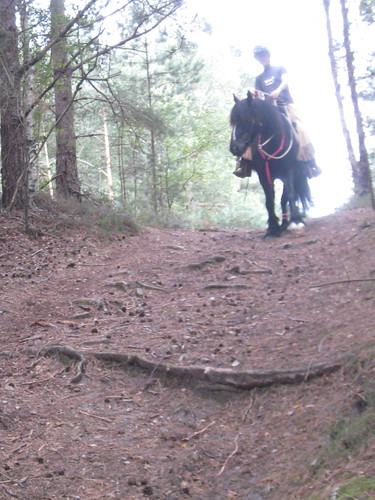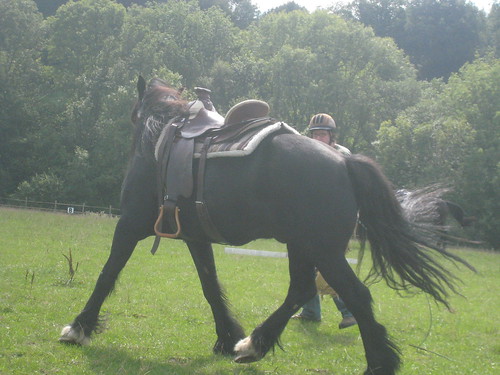Having established what our horses don’t want from us, what can we bring to the table that our horses might need? I’m ignoring, for the time being the basics of feed and care, and thinking in the slightly narrower terms of the relationship with have with our horses and how we behave around them.
For me the single biggest thing we have to offer is leadership and that is a slightly tricky term. The problem is that our notion of “leadership” has been poisoned by people who name themselves as our leaders. The politicians and captains of industry to whom the term “leader” is most liberally applied are not the people who we might choose to be lead by. If more of the people who manage us in our working lives were genuine leaders then Dilbert would not be one of the most popular cartoon strips in the world. Consequently whenpeople start talking about leadership, most of us think of cold, distant, self-serving individuals who are quick to drop a colleague into trouble to protect themselves. That is what our current political and media culture has taught us they are.

But that isn’t what a leader is. A real leader is a person that you follow because you want to, because you feel that when they are in charge then things are going to work out fine. I suspect many of us will know a person like this, whether it is the friend who leads you off on wild adventures or the manager who makes work a pleasure and always brings out the best in you, that is how it feels to have a good leader.
So what does it take to be a good leader? I’m still working on this, but I have some ideas that I definitely believe are important parts of the picture.
A leader is consistent- they respond in the same way to the same things. If you are well lead, you don’t have to worry that something that was alright yesterday is going to get you shouted at today. It is very hard to to trust a person who is unpredictable.
A leader is reliable, this comes from consistency but takes it a little further- you know that if a problem comes up you can count on a genuine leader to help and support you in solving it. A really good leader is unlikely to solve problems for you, instead they will enable you to solve them for yourself.
A leader is conscious of who they lead – a good leader will not push you beyond the limit of your ability. They may however push you beyond what you believe to be the limit of your ability, so that you can learn more of what you are capable of. To be able to do that requires genuine understanding of the people who are being lead.
A leader takes responsibility. This is particularly important in horsemanship- ultimately a successful leader makes the decisions. This is the part that people who want power see, the right to make decisions and take control of others, but without any of the other elements I have mentioned here. They do not distinguish between leadership and control. But responsibility is more than simply making a decision at your whim, it is having the vision and awareness to make the right decision for everyone you are leading.
The thread that runs through all of this is trust. A good leader is trustworthy and – this is the part that often gets left out – they also trust the people under their leadership. A leader may have overall responsibility for direction, but they also rely on those they are leading to fulfil their own responsibilities. I expect that I will have a lot more to say about trust in future because I think it is very important in horsemanship and in life, but for now I will say that a leader who is not trusted by those they claim to lead is no leader at all.
If you have ever been well lead or part of a really solid team, then you will probably have been aware that by knowing your own role and by trusting that everyone else was fulfilling their roles you were able to excel in your own area. It is also empowering not to have to worry about every single thing, to know that the person in charge can be relied on to make good decisions and you don’t have to spend all your time doubting or second-guessing them. Many things become someone else’s problem and you only have to concern yourself with the problems that you have to deal with directly.
This is where I think that leadership is so important to horses. For a horse, feeling that you have to make decisions about things the whole time is a stressful situation to be in. If we can show them that we are a good enough leader that they don’t need to worry about every little thing that happens then they are able to relax and think about what we are asking them to do. This is natural to them – in a herd they will choose to follow the lead of a horse they trust rather than constantly exploring for themselves. The horse’s mind is full of survival strategies that have served them brilliantly over millions of years as a prey animal living out in open grassland. It does not necessarily help them as much in a world of noisy humans, wind-blown litter and fast moving traffic. By building up our relationship so that we are able to say to the horse “that really isn’t your problem, let me worry about that and I’ll let you know what to do” we are offering them a degree of safety and comfort that they would not otherwise have in that situation. That means a lot to horses and to humans.


